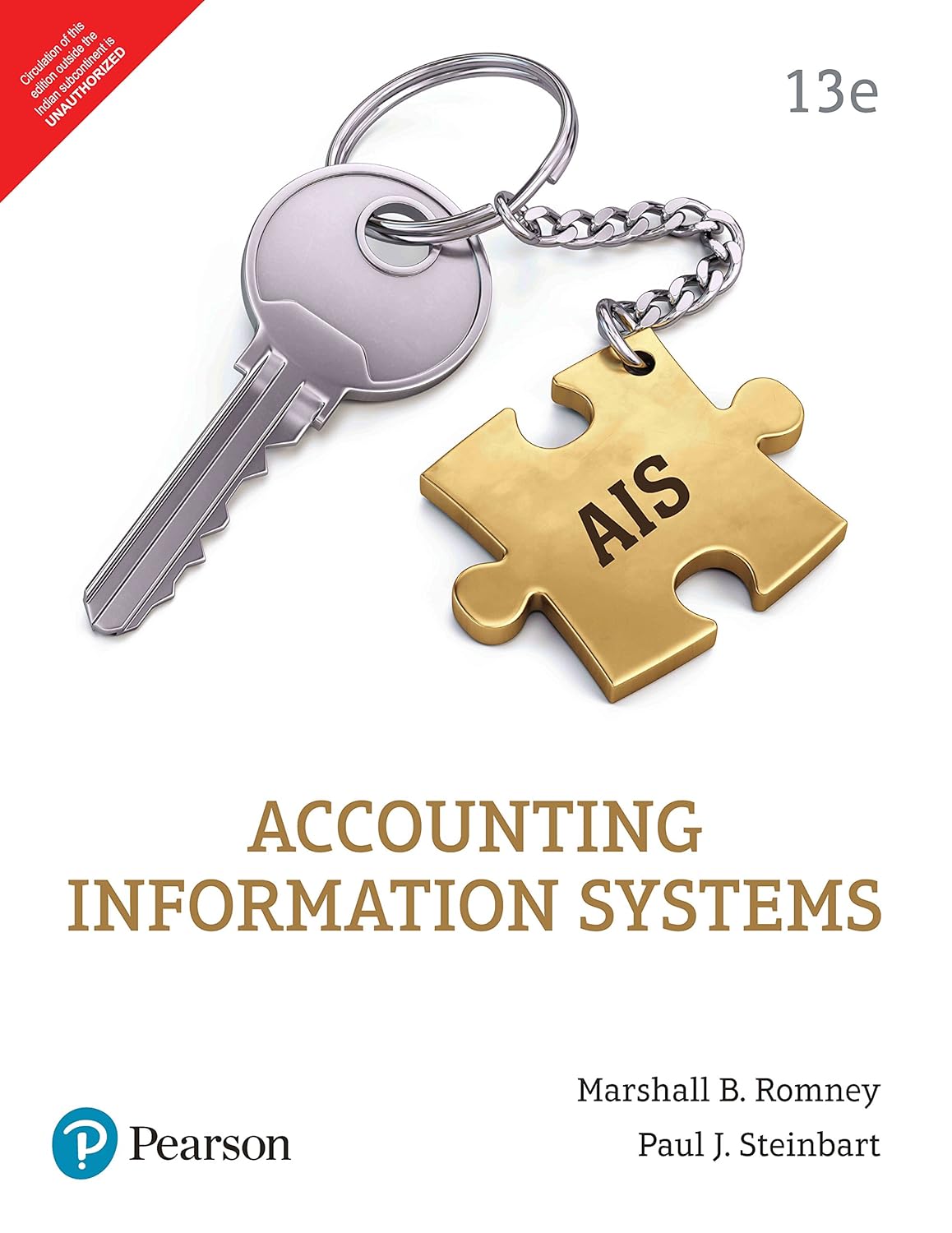BOOKZONE
Accounting Information Systems 13th Edition (Paperback)
Author : Marshall B. Romney
Binding:Paperback
Publication Date
Publisher :
SKU:9789352866212
Bulk Discount Get Exta 5% upto 10%
Share

The market-leading text with the most comprehensive, flexible coverage of AIS available.This market-leading text delivers the most comprehensive and flexible coverage of the our major approaches to teaching AIS, while allowing instructors the flexibility to reorder chapters and focus the material to suit their individual course needs. This new edition has been updated to cover all of the most recent developments in AIS and to show AIS has changed the roles of an accountant.Teaching and Learning ExperienceThis texts presents a better teaching and learning experiencefor you and your students. Here's how:Students see the concepts in actionUp-to-date information covers critical topicsStudents get numerous opportunities to practice and hone their skillsInstructors get the flexibility to tailor the material to fit their individual course needsIntegrated chapter-opening cases introduce important material and reinforce key concepts. Key concepts and topics are identifiedSeveral key issues/problems to be solved as presentedThe cases are referenced throughout the chapterChapter summaries present solutions to the problems and issues raised in the caseA real-world view in the focus boxes and real-world examples help students understand how companies are using the latest IT developments to improve their AIS.Up-to-date information covers critical topics, such as:Fraud and computer fraudInternal control frameworks COSO, COSO-ERM, and COBITInformation security countermeasures, including the security and control implications associated with virtualization and cloud computingHands-on Excel exercises, many based on how-to� tutorials that appeared in recent issues of the Journal of Accountancy, help readers hone their computer skills.Numerous problems in every chapter provide additional opportunities to demonstrate mastery of key concepts.Cases in each chapter encourage reader to delve deeper into specific topics.Chapter quizzes let readers self assess their understanding of the material. Detailed explanations about the correct answer to each quiz question are provided.Extensive use of graphics enhances students understanding of the concepts through hundreds of figures, diagrams, flowcharts, and tables.Part I: Conceptual Foundations of Accounting Information Systems Chapter 1. Accounting Information Systems: An Overview Chapter 2. Overview of Transaction Processing and Enterprise Resource Planning Systems Chapter 3. Systems Documentation Techniques Chapter 4. Relational Databases Part II: Control and Audit of Accounting Information Systems Chapter 5. Computer Fraud Chapter 6. Computer Fraud and Abuse Techniques Chapter 7. Control and Accounting Information Systems Chapter 8. Information Systems Controls for System ReliabilityPart 1: Information Security Chapter 9. Information Systems Controls for System ReliabilityPart 2: Confidentiality and Privacy Chapter 10. Information Systems Controls for System ReliabilityPart 3: Processing Integrity and Availability Chapter 11. Auditing Computer-Based Information Systems Part III: Accounting Information Systems Applications Chapter 12. The Revenue Cycle: Sales to Cash Collections Chapter 13. The Expenditure Cycle: Purchasing to Cash Disbursements Chapter 14. The Production Cycle Chapter 15. The Human Resources Management and Payroll Cycle Chapter 16. General Ledger and Reporting System Part IV: The REA Data Model Chapter 17. Database Design Using the REA Data Model Chapter 18. Implementing an REA Data Model in a Relational Database Chapter 19. Special Topics in REA Modeling Part V: The Systems Development Process Chapter 20. Introduction to Systems Development; Systems Analysis Chapter 21. AIS Development Strategies Chapter 22. Systems Design, Implementation, and Operation


